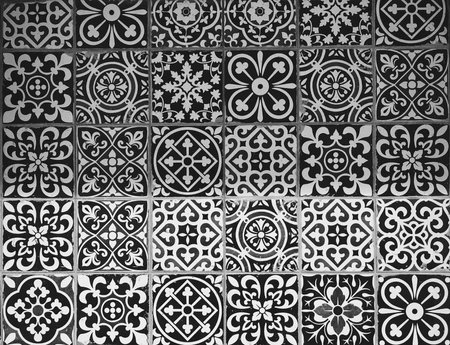The URI is the Thing
If there’s one invention in the 20th Century that gets overlooked, it’s the URI. URIs are the magic that makes the web work, bringing the Internet to almost everyone on the planet today.
Before the URI was introduced, a great number of different approaches existed for locating and transferring information between computers. The arrival of the URI unlocked the potential of the Internet to bring information to everyone. And yet, somehow technology trends in the past 30 years have diminished the role of URIs in distributed systems.
As I write this, many are re-discovering the URI as the key component of the hypertext origins of the web. Indeed, there are web development libraries, such as htmx, that are rewinding the clock and imagining a different future for the early web.
Hypertext systems work by presenting a set of URIs (links) embedded inside a page. When a user clicks on one of these links, the browser navigates to a new page. With some care, a web application can be developed as a set of hypertext pages. Developers of hypertext systems need to embed an application’s state in links they include in the content they serve. For example, a URI in a banking application might embed the account number and transaction period so that the web server generating the response can query the correct data from a database.
URI Templates
Typically, developers use basic ad-hoc techniques such as string concatenation to embed state in a URI. However, there’s actually a standard called URI Template (RFC 6570).
Here’s a simple URI Template:
http://example.com/~{username}/If you’re familiar with OpenAPI the syntax may look familiar.
OpenAPI serialization rules are based on a subset of URI template patterns defined by RFC 6570.
Here’s a more complex example. It makes use of some (though not all) of the features available in URI Template.
https://{env}bank.com{/ctx*}/accounts/{accno}/transactions{.format}{?from,to}{#frag}In this template note the use of open and close braces to enclose variables. The variables in this template are the following:
env: An optional string so we can generate, say, https://uat.bank.com for testing./ctx*: The forward-slash indicates this is a path segment. The asterisk modifies this to mean it can have multiple segments.accno: This will be the account number of our bank account..format: This might be.csvor.json.from: The start of the date range.to: The end of the date range.#frag: An optional fragment, the#-prefix indicates ‘fragment expansion’
URI Templates in Clojure
We’ve recently added complete and comprehensive support for URI Templates to our Clojure library, Reap. Reap is a sort of swiss-army knife for creating precise parsers. It is particularly useful for string formats defined by Internet RFCs, including the URI Template syntax.
Using Reap, we can compile the URI template above. Once compiled, we can construct a URI, satisfying the variables with their corresponding values. Here’s some Clojure code to do just that:
(require '[juxt.reap.rfc6570 :refer [compile-uri-template make-uri]])
(make-uri
(compile-uri-template
"https://{env}bank.com{/ctx*}/accounts/{accno}/transactions{.format}{?from,to}{#frag}")
{:ctx ["europe" "uk"]
:accno "12345678"
:format "csv"
:from "20201010"
:to "20201110"})
=>
"https://bank.com/europe/uk/accounts/12345678/transactions.csv?from=20201010&to=20201110"Usefully, we can use a compiled template to go in the other direction.
Say we have a URI of https://bank.com/europe/uk/accounts/12345678/transactions.csv?from=20201010&to=20201110
and want to extract the data encoded into it.
We must provide the types of the variables we wish to extract, which influences what is returned.
(require '[juxt.reap.rfc6570 :refer [compile-uri-template match-uri]])
(match-uri
(compile-uri-template
"https://{env}bank.com{/ctx*}/accounts/{accno}/transactions{.format}{?from,to}{#frag}")
;; Specify the types of the variables we want to extract
{:env :string
:frag :string
:accno :string
:ctx :list
:format :string
:from :string
:to :string}
"https://bank.com/europe/uk/accounts/12345678/transactions.csv?from=20201010&to=20201110")
=>
{:env ""
:ctx ["europe" "uk"]
:accno "12345678"
:format "csv"
:from "20201010"
:to "20201110"
:frag nil}Applications of URI Template
The ability to construct and consume URIs makes it easier to build hypertext-based web applications.
For example, you could use our reap library as the basis of a web router to decode state encoded into URIs.
Of course, there are many Clojure libraries already that do this well, including our own bidi library.
However, URI Template supports more sophisticated features, such as embedding lists and maps into URIs. But more importantly, URI Template is a Proposed Standard from the Internet Engineering Task Force (IETF) and can be relied upon for many years ahead.

Digging Deeper into the Implementation
You can stop reading now, unless you’re curious about how we have implemented URI Templates in Reap.
Let’s start with the compile-uri-template function:
(ns juxt.reap.rfc6570
(:require
[juxt.reap.regex :as re]
[juxt.reap.decoders.rfc6570 :refer [uri-template]]))
(defn compile-uri-template [uri-template-str]
(let [components (uri-template (re/input uri-template-str))]
{:components components
:pattern …
}))As you can see, it takes the URI Template as a string turns it into a java.util.Matcher with re/input.
Reap implements a parsing technique known as ‘Parsing Expression Grammar’, or PEG for short.
PEG is formally described in the original paper by Bryan Ford at MIT.
Pegs are built up from some simple building blocks called parsing expressions. These include ‘sequence’, ‘prioritized choice’, ‘zero-or-more repetitions’ and others.
Reap comes with many more built-in ‘pegs’ (parsing expression grammers), and you can easily create your own.
To create a parser for URI Template we only need to translate a grammar from the RFC to Clojure.
For example, in Section 2 of RFC 6570, we find the following ABNF definition:
URI-Template = *( literals / expression )Using the parser combinator facilities in Reap, we can convert this ABNF into a Clojure-language parsing expression grammar:
(ns juxt.reap.decoders.rfc6570
(:require
[juxt.reap.regex :as re]
[juxt.reap.combinators :as p]))
(def uri-template
(p/complete
(p/zero-or-more
(p/alternatives
(p/pattern-parser (re-pattern (re/re-compose "%s+" literals)))
expression))))The uri-template peg is a nested structure of Clojure s-exprs.
The outer wrapper is p/complete, which tells the parser that it can only return the peg if the input has been fully consumed.
Note, this corresponds to the special EndOfLine symbol in the original PEG syntax.
Wrapped inside is a p/zero-or-more parser, that maps to the *( ) notation in the ABNF.
Wrapped inside this is a p/alternatives parser.
In PEG terminology, this is our ‘prioritized choices’ parsing expression.
In ABNF, it is denoted with /.
Finally, wrapped inside this are the two choices.
The first is a p/pattern-parser which we give a Java regular expression pattern that corresponds to the definition of a literal.
The second is a peg corresponding to the following ABNF, also given in RFC 6570:
expression = "{" [ operator ] variable-list "}"
operator = op-level2 / op-level3 / op-reserve
op-level2 = "+" / "#"
op-level3 = "." / "/" / ";" / "?" / "&"
op-reserve = "=" / "," / "!" / "@" / "|"Here’s the peg coded in Reap:
(def expression
(p/into
{}
(p/sequence-group
(p/ignore (p/pattern-parser #"\{"))
(p/optionally
(p/as-entry :operator (p/comp first (p/pattern-parser (re-pattern operator)))))
(p/as-entry :varlist variable-list)
(p/ignore (p/pattern-parser #"\}")))))This peg makes use of some special Reap functions (p/into, p/ignore, p/as-entry, p/comp, etc.).
These allow us to construct a bespoke Clojure map of the result.
Putting all this together, let’s see the result of the uri-template parser expression grammar for a simple template:
(compile-uri-template
"http://example.com/~{username}/")
=>
("http://example.com/~"
{:varlist [{:varname "username"}]}
"/")There are 3 components to this template. The first and last components are literals, which we can match using Java’s regex for quoted literals:
\Qhttp://example.com/~\E … \Q/\EThe middle component is a variable expression. Using Reap’s facilities to compose regular expressions, we can convert this to the following regex pattern:
(re/re-compose
"((?:[%s]|%s)*)"
(re/re-str (rfc5234/merge-alternatives rfc3986/unreserved \, \=))
rfc3986/pct-encoded)
=>
((?:[[\x2C-\x2E][0-9]\x3D[A-Z]\x5F[a-z]\x7E]|%[0-9A-F]{2})*)Here you can see that RFC 6570 refers to ABNF productions in other RFCs. In this case, RFC 5234 and RFC 3986 are referenced.
One of the things I love about RFCs is leverage: that many RFCs put down the foundations for others. RFCs are the interlocking components that define the Internet.
Back to our example, by concatenating these regular expressions we end up with a single regular expression that can match URIs. This is the basis for the matching URI capabilities of Reap which we saw at the beginning of this article.
Wrapping up
I hope you enjoyed this tour of URI Templates and have gained an understanding of PEG parsing as implemented by Reap.
If you have any questions or points of feedback, please email me at mal@juxt.pro and I’ll do my best to answer them.
Image attribution: https://www.flickr.com/photos/nickwebb/2918883446







